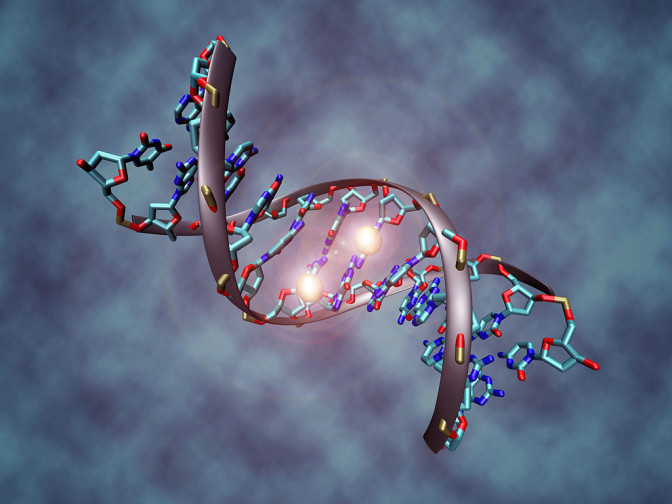Two years ago, I took my first genealogical DNA-test. Thankfully, the results weren’t too surprising, but definitely interesting. Grandpa, who was born three months after his parents’ marriage, was indeed the son of his father because I share DNA with multiple relatives on that side. My friend Mary, whom I knew to be related on my father’s side, also turned out to share DNA with my mother. This find may enable us to trace the father of an illegitimate ancestor.
Before I tested, I would never have thought that DNA testing would help me trace emigrants from the Achterhoek. But my own half-Achterhoek DNA matches descendants of the thousands of emigrants from that area and the trees of my matches show me emigrants in places where I never thought to look for them.
I have now tested with three companies: FamilyTreeDNA, 23andMe and Ancestry.com. All of them will show you a list of people who you share DNA with: other people who tested with that company and who gave consent to share their results. Some websites have a chromosome browser that allow you to see on which chromosomes you share pieces of DNA with another person. Groups of people sharing the same piece of DNA probably descend from the same ancestor: valuable information for tracing unknown ancestors, especially when combined with well-documented trees.
Besides the websites of the DNA testing companies, there are several other websites where you can take your results. At Gedmatch.com you can compare results of people who tested with different companies using specialist tools. A new tool, available for users who donated to Gedmatch, is Lazarus. Based on DNA of relatives, Larazarus creates a DNA profile for a person who did not test himself, usually a deceased parent or grandparent. I see Lazarus as the first step in a revolution in genealogy, whereby we will be able to reconstruct the DNA of increasingly early ancestors.
DNA research will become an essential part of establishing genealogical proof. Earlier this year, the National Genealogical Society Quarterly for the first time refused an article on the basis that no effort was taken to support the conclusion by DNA testing. By familiarizing ourselves with these new tools, we make sure that we use all the available options to find our ancestors.

DNA methylation. Credits: Christoph Bock, via Wikimedia Commons (CC-BY-SA)


Interessant artikel, en ik moet bekennen dat ik zelf ook al eens met de gedachte heb gespeeld om een test te doen. Maar dan met het specifieke doel om er achter te komen waar mijn familienaam vandaan komt. Mijn oudste voorvader duikt rond 1650 op in Belgisch Limburg, maar werd zeer waarschijnlijk ver daarvandaan geboren (zie http://www.fasol.nl/de-wereld-van-jacob-fasol/). Ik zoek dus eigenlijk een test die een geografisch gebied aan kan duiden voor het dna uit de mannelijke lijn. Maar bestaat dat?
Hallo Peter,
Je zou een Y-DNA test kunnen doen (een test die alleen kijkt naar je Y-chromosoom dat van vader op zoon overerft). Dat geeft je de haplogroep, met een kaartje erbij van waar die haplogroep voorkomt. Ook krijg je een lijst met matches; andere mensen met vergelijkbare waardes. Als je mazzel hebt zitten daar mensen bij die maar weinig mutaties van je verschillen, dan is de kans groot dat je relatief recent, bijvoorbeeld tot 8 generaties terug, een mannelijke voorouder deelt. Een Y-test kun je doen bij FamilyTreeDNA. In jouw geval zou ik minstens 67 markers aanraden, je kunt later nog verder opwaarderen als je veel matches hebt.
Dankjewel, ik ga er naar kijken!
DNA Tools. These notes are very timely for me. My van Weert line suffers from the opposite, i.e. no matches, indicating the Y-dna has not mutated for a long time, possibly not since the mid-Bronze age. That suggests approx. over 100 generations. Since approx. 60% of Dutch men carry a mutated form of the R1b haplo group (90% of the Irish!), the van Weert forefather would be related to all of them. This observation is controversial and the subject of discussion among genetic genealogists, but it provides a unique tool to verify ancestry between various van Weert, van de(r) Weert, van Weerd, de Weert, etc. family lines. I’ll be glad to provide more information.
I came across your note, Yvette, via de Reusel de Mierden source error, while searching for the Dutch line of Woutersz van Weert, who moved to Tarrytown , N.Y.early 17th century.
Gus (Gezinus) Van Weert
Caledon East, ON
Canada L7E 0Z1
Hallo Yvette,
Ik lees dat jij drie DNA-tests hebt gedaan. Ik ben voornemens om ook een DNA-test te doen.
Welke test / welke organisatie geeft volgens jou het beste resultaat?
Weet jij ook welke organisatie het meest betrouwbaar met de privacy omgaat?
Dank voor je resctie!
Groet,
Vincent
FamilyTreeDNA heeft de goedkoopste verzending naar Nederland en heeft daarom de meeste Nederlanders, maar hun voorspellingen over je herkomst zijn het slechtst. 23andMe heeft veel mensen die niet aan stamboomonderzoek doen (test gedaan vanwege gezondheid) en die reageren dan slecht, maar hun voorspellingen over herkomst zijn beter. Ancestry verzendt niet naar Nederland en heeft dus weinig Nederlanders.